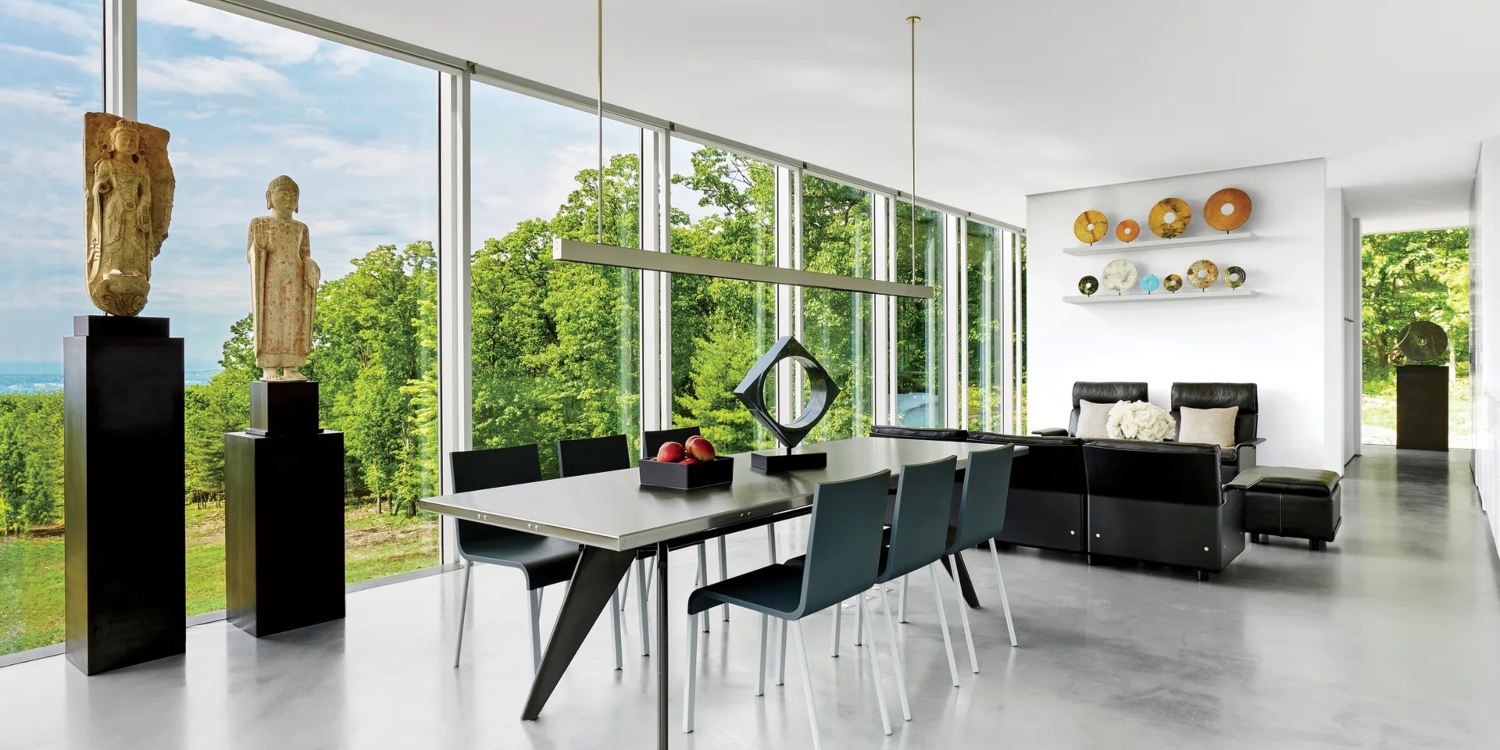While modern and contemporary are frequently used interchangeably, they hold separate meanings in the realm of interior design. Nevertheless, modern and contemporary styles share numerous similarities, so it’s no wonder that certain aspects of modern design have resurfaced in popularity, blurring the boundaries between the two and making distinguishing between them a complex task.
The Differences Between Contemporary and Modern Design

Modern design typically encompasses the period spanning the early 1900s to the 1960s. It emerged as a departure from the ornate and intricately adorned interiors prevalent in styles such as Victorian. Embracing minimalism, modern design drew inspiration from influential movements like the German Bauhaus and Scandinavian design. Notably, the era is characterized by the enduring popularity of mid-century modern aesthetics. Modern design is marked by its distinctive features, including clean lines, the use of warm woods, and neutral color schemes. This style prioritizes simplicity and functionality.
Contemporary Design Is Ever-Evolving

Originating in the 1970s, contemporary design emerged after modern design. However, unlike modern style, contemporary design cannot be attributed to a specific time period. Contemporary design is defined as being a dynamic and ever-evolving style influenced by and encompassing various design trends. In essence, it represents the current and ongoing decorating style of the moment. In the present day, contemporary design draws inspiration from a range of influences, such as modern lines, global design, and environmentalism. However, overall, the contemporary style maintains a sense of restraint. It embraces sleek lines and neutral color palettes, often exuding a stark aesthetic that bears a resemblance to modern design. It showcases a color palette with heightened contrast and emphasizes minimalism, creating a greater emphasis on open space within the overall composition.
Modern and contemporary decorating styles share significant similarities. Both styles prioritize clean lines and minimalistic spaces anchored by a neutral color scheme. While they may bear a resemblance, it is crucial to acknowledge the key differences between the two. Modern design values functionality, while contemporary design leans towards form. Modern style places a premium on practicality and simplicity, extending to furniture choices and room layouts. It avoids frivolous decorative elements, quirky shapes, and impractical use of space. In essence, modern decorating is driven by functionality.
Contemporary design elements allow for sculptural aesthetics with eye-catching light fixtures. Neutral palettes dominate both modern and contemporary spaces. Contemporary style thrives on contrast, using cool shades, asymmetrical decor, and focal points. Modern design favors warmer, lighter, earthy tones, symmetrical balance, and plain aesthetics. Contemporary style is more fluid and curvy and can incorporate funkier shapes. While the modern style has specific parameters, the contemporary style evolves with design trends. In just five years, a contemporary space can be refreshed with new colors, patterns, and furniture, showcasing its fluidity and adaptability.